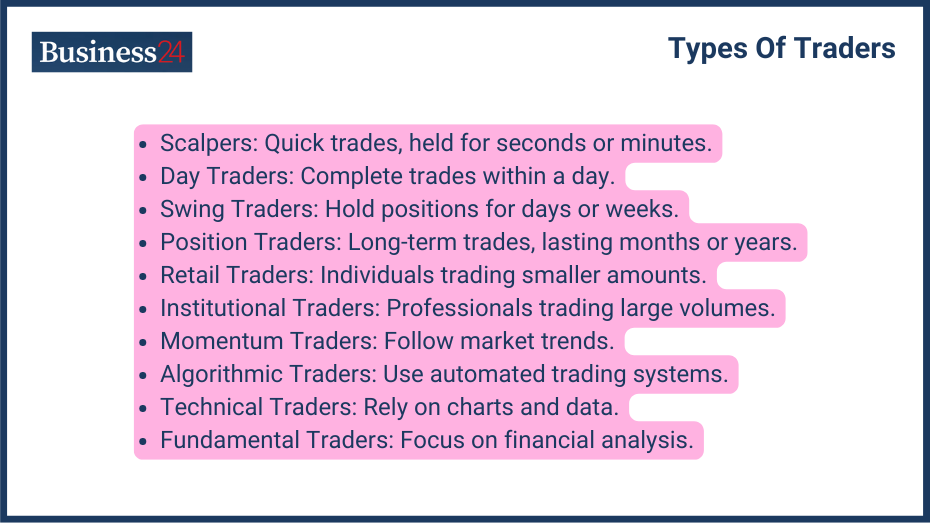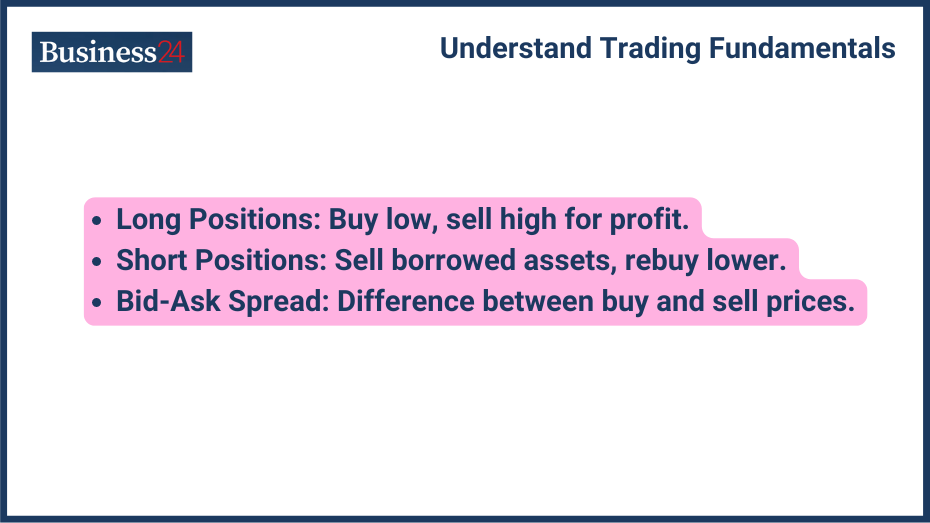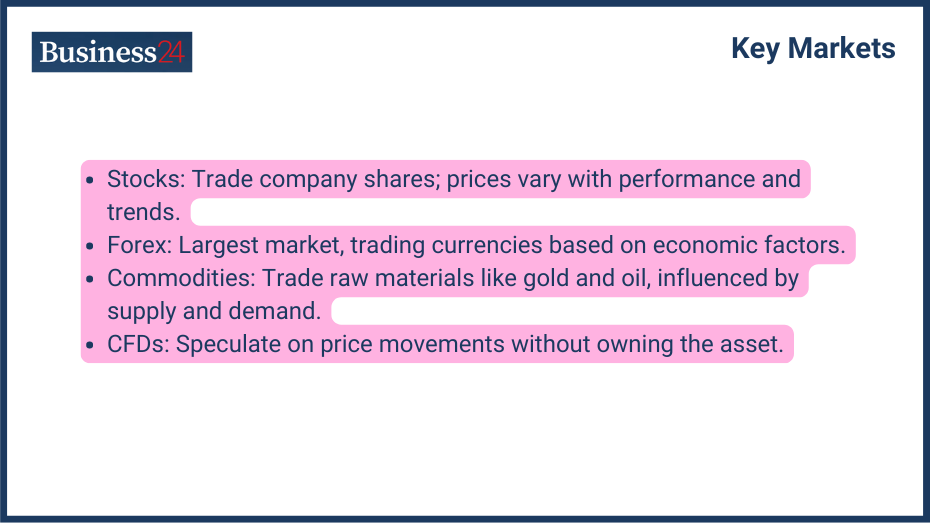
Discover what type of trader you are with our in-depth guide. Learn about different trading styles, strategies, and find the one that matches your goals and personality for better investment decisions.
Trading is a vast area, and there are various kinds of traders, ranging from scalpers who hold trades for minutes to positional traders who hold their trades for months to years. However, this is not only the classification of a trader; traders can also be classified according to the type and size of money management – retail and institutional traders.
Retail traders are individual investors who trade financial instruments for their accounts. They typically have smaller trading sizes and may trade part-time or full-time. Institutional traders are professional traders who work for financial institutions, such as banks, hedge funds, or pension funds. They often trade larger quantities and have access to advanced trading tools and research.
Understand Trading Fundamentals

A trader must understand all the fundamentals of trading so he can tackle all situations before making any emotional decision.
How Trading Works?
Mainly working of trading is categorized into the following:
- Long Positions: When you take a long position, you are buying an asset with the hope that its price will increase. You can sell the asset for a profit if the price does increase. For example, if you believe that the price of a stock will go up, you can buy the stock and then sell it at a higher price later.
- Short Positions: Just opposite of the long position, the short position sells borrowed assets with the expectation of price decreases. You borrow the asset from your broker and sell it in the market, hoping the price will decline. If the price does decline, you can buy the asset back at a lower price and return it to your broker, making a profit. Short selling can be risky, as there is no limit to how much you can lose if the asset price increases.
- Bid-Ask Spread: The bid-ask spread is the difference between a security’s buying and selling price. It represents the transaction cost traders incur when buying or selling an asset. A wider bid-ask spread can reduce your profitability, while a narrower spread can increase your profitability.
Key Markets

You can trade in various markets, but different traders have knacks for different market environments. The most common markets are:
- Stocks: The stock market is one of the most popular trading markets. Stocks represent ownership in a company, and their prices can fluctuate based on various factors, such as the company’s financial performance, industry trends, and overall market conditions.
- Forex: The foreign exchange market, also known as the forex market or FX market, is the largest financial market in the world. In the forex market, traders buy and sell different currencies. The value of a currency is determined by supply and demand, as well as economic factors such as interest rates, inflation, and trade balances.
- Commodities: Commodities trading involves the trading of raw materials like gold, oil, and agricultural products. These are physical assets that can be traded in future markets. The price of commodities is influenced by various factors, including supply and demand, economic conditions, and geopolitical events.
- CFDs (Contracts for Difference): Trading the price difference of underlying assets without owning them. CFDs are financial derivatives that allow you to speculate on the price movement of an underlying asset without actually owning the asset. This can be a more efficient trade, requiring less capital than buying the underlying asset.
Start with Education
There are various paid and free ways you can learn about trading:
- Online Courses: Many platforms offer free or paid courses covering the trading basics. These courses can teach you about trading strategies, market analysis, risk management, and other essential topics. Some popular online platforms for learning trading include Coursera, Udemy, and Babypips.
- Books: Numerous books on trading are available that can provide you with in-depth knowledge. Some recommended books include “Day Trading for Dummies” by Ann Logue, “The Art of Technical Analysis” by John Murphy, and “The Intelligent Investor” by Benjamin Graham.
- Webinars: Many trading platforms and financial institutions host free webinars on various trading topics. These webinars can be a great way to learn about new trading strategies, market trends, and industry news.
However, you can only learn the basics from these sources, and real experience in the market is the best way to learn trading.
Practice Before You Trade
Before you put your hard earned money to risk, you can practice in different ways:
Using Demo Accounts to Test Strategies
Demo accounts allow you to practice trading without risking real money. This is a great way to learn the ropes and experiment with different trading strategies without fearing financial loss.
Demo accounts can help you become familiar with the trading platform’s interface and features. This will make navigating the platform and executing trades easier when trading with real money.
Understanding Trading Platforms
Understanding the platform’s ins and outs helps you avoid costly mistakes in live trading. Knowing how to exit a trade if the market turns against you quickly is essential, and knowing how to use charting tools to predict future trends is critical. When you move on to real trades, the platform will feel second nature, and you’ll be better equipped to make quick, informed decisions.
Choosing the Right Broker
Here are some of the key criteria to look for while looking for a broker:
- Regulation: Choose a broker regulated by a reputable regional financial authority. This ensures that the broker is subject to certain standards and regulations, which can protect your funds and investments. Also, while trading, you won’t face any problems. A regulated broker is more likely to be financially sound and adhere to ethical practices.
- Fees: You can save money by thoroughly comparing the fees different brokers charge, including commissions, spreads, and other charges. Consider the overall cost of trading and how it aligns with your trading style and budget. Some brokers may charge higher commissions but offer other benefits, such as research tools or customer support.
- Platform Features: Evaluate the trading platform offered by the broker. Look for features such as advanced charting tools, real-time quotes, order types, and research tools. The platform should be user-friendly and provide the tools and features you need to execute your trades effectively. A good trading platform can help you make positive decisions and improve your trading performance.
Account Types and Leverage Options
- Account Types: Choose an account type that suits your trading style and needs. Some common account types include individual trading accounts, joint trading accounts, and corporate trading accounts. Individual trading accounts suit individual investors, while joint trading accounts allow multiple individuals to trade together. Businesses and organizations use corporate trading accounts.
- Leverage Options: Consider the leverage options offered by the broker. Leverage allows you to trade larger positions with a smaller amount of capital. However, it also increases. Your risk of losses. It is important to use leverage wisely and avoid excessive risk.
Create a Trading Plan
The most important step for a trader is to create a trading plan to fully prepare to execute trades.
Risk Management Tools
- Stop Loss Orders: Stop loss orders automatic sell orders to limit losses if the price moves against you. Stop-loss orders are essential for risk management. They allow you to sell a position automatically if the price reaches a predetermined level, limiting potential losses. For example, if you buy a stock at $100 and set a stop-loss order at $95, the order will be automatically executed if the stock price falls to $95 or below.
- Limit Orders: Place orders to buy or sell at a specific price, helping to control risk and capture profits. Limit orders can be used to buy a security at a certain price or to sell it at a certain price. This can help you avoid paying a higher price than you are willing to or selling a security at a lower price than you are willing to accept. For example, if you want to buy a stock at $100 but are unwilling to pay more, you can place a limit order at $100. Your limit order will be executed if the stock price reaches $100.
Setting Goals, Budget, and Strategy
- Clear Objectives: Define your trading goals, such as generating income, capital appreciation, or hedging risk. Having clear objectives will help you stay focused and make informed decisions. Your goals should be realistic and achievable.
- Realistic Budget: Set a realistic budget for your trading activities and stick to it. It’s important to avoid overtrading and risking more than you can afford to lose. Your budget should be based on your financial situation and risk tolerance.
- Trading Strategy: Develop a well-defined strategy based on your goals, risk tolerance, and market analysis. Your strategy should outline your approach to trading, including the types of securities you will trade, the timeframes you will use, and your risk management techniques. It should be based on your research and analysis and flexible enough to adapt to changing market conditions.
Trading Strategies and Styles
For successful trading, you must find the style and strategy that best suits you. Here are some of the common trading styles:
- Day Trading: Day traders aim to profit from short-term price movements. They typically use technical analysis and high-frequency trading techniques. Day trading requires a high level of skill, knowledge, and discipline. It is suitable for traders who have the time and resources to monitor the markets closely and make quick decisions.
- Swing Trading: Swing traders hold positions for a few days to weeks, aiming to capture short-term price movements. They focus on identifying and exploiting short-term market trends. They may use both technical and fundamental analysis to make trading decisions. Swing trading requires a moderate level of skill and knowledge. It suits traders willing to hold positions for a few days or weeks.
- Scalping: Scaping executes very short-term trades, often profiting from small price fluctuations. Scalpers aim to profit from small price movements within a short period. They typically use technical analysis and high-frequency trading techniques. Scalping requires a high level of skill, knowledge, and speed. It is suitable for traders who have access to advanced trading technology and are willing to take on high levels of risk.
Developing and Refining Your Strategy
- Technical Analysis: Technical analysis involves analyzing price charts and patterns to identify trading opportunities. It involves studying historical price data to identify trends, patterns, and support and resistance levels. Technical analysts use various indicators and tools, such as moving averages, relative strength index (RSI), and Bollinger Bands, to make trading decisions.
- Fundamental Analysis: Another method is fundamental analysis, which involves evaluating a company’s or asset’s underlying value based on financial statements and economic factors. Fundamental analysts focus on a company or asset’s financial health and prospects. They analyze earnings, revenue growth, debt levels, and industry trends. Fundamental analysis can help you identify undervalued or overvalued securities.
Risk Management and Psychology
- Emotional Control: Emotions can often cloud your judgment and lead to poor trading decisions. Avoid impulsive decisions driven by fear or greed. It is important to stay calm and disciplined, even during market volatility.
- Risk Tolerance: Investors have different risk tolerances, so understand yours and adjust your trading accordingly. Some investors are comfortable taking on higher risks in the hopes of higher returns, while others prefer a more conservative approach. It is important to understand your risk tolerance and adjust your trading strategy accordingly.
Leveraged Products and Margin Trading Risks
- Leverage Risks: Understand the risks of using leverage, which can amplify profits and losses. Leverage allows you to trade larger positions with a smaller amount of capital. However, it also increases your risk of losses. If the market moves against you, your losses can be magnified.
- Margin Calls: Be aware of the potential for margin calls if your account balance falls below a certain level. Margin calls occur when you use leverage and your account balance falls below the required margin level. If you cannot meet a margin call, your broker may liquidate your position, resulting in a loss.
Go Live
Start with small trades and gradually increase your position as you gain confidence. It is important to start slowly and gradually increase your trading activity as you become more comfortable with the market. Review your trading performance regularly and make adjustments as needed. Track your trades, profits, and losses. This will help you identify areas for improvement in your trading strategy.
Stay updated on market news and trends. It is important to stay informed about the latest news and events that could affect the markets. This includes economic data, company announcements, and geopolitical events. The trading landscape is constantly evolving, and it is important to stay up-to-date on the latest trends and developments. This can help you improve your trading skills and increase your chances of success.
Disclaimer
eToro is a multi-asset platform which offers both investing in stocks and cryptoassets, as well as trading CFDs.
Please note that CFDs are complex instruments and come with a high risk of losing money rapidly due to leverage. 61% of retail investor accounts lose money when trading CFDs with this provider. You should consider whether you understand how CFDs work, and whether you can afford to take the high risk of losing your money
This communication is intended for information and educational purposes only and should not be considered investment advice or investment recommendation. Past performance is not an indication of future results.
Copy Trading does not amount to investment advice. The value of your investments may go up or down. Your capital is at risk.
Crypto assets are complex and carry a high risk of volatility and loss. Trading or investing in crypto assets may not be suitable for all investors. Take 2 mins to learn more
eToro USA LLC does not offer CFDs and makes no representation and assumes no liability as to the accuracy or completeness of the content of this publication, which has been prepared by our partner utilizing publicly available non-entity specific information about eToro.
